Picture this: you’re heading out for lunch and say, “Hey Google, find a good veggie place near me.” That’s voice search in digital marketing at work. Millions do the same thing every day. If your site isn’t set up for Voice Search Optimization (also called voice search engine optimization or simply voice optimization), those people won’t find you.
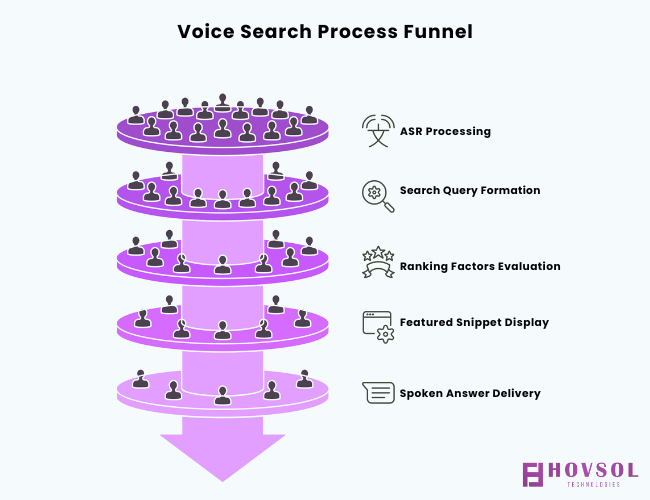
For SaaS teams, e‑commerce brands, and local services, voice isn’t a nice extra—it’s part of basic technical SEO hygiene. Get it right and you’ll reach more people, earn trust, and make your site simpler to use. Here’s a straight path to doing that.
Key Takeaways
- Optimise for how people speak: target long‑tail, question‑based queries and structure clear answers to earn featured snippets.
- Make mobile speed and technical basics non‑negotiable: fast pages, HTTPS, and helpful schema increase your chances of being the spoken result.
- Win locally by tuning your Google Business Profile and keeping NAP data consistent—capture “near me” voice searches.
What is Voice Search Optimization?
Voice Search Optimization prepares your pages to answer spoken questions on assistants like Alexa, Google Assistant, and Siri. People don’t talk in two‑word fragments; they ask full questions. Your content should meet them there with clear answers.
You’ll also hear this called voice search engine optimization (Voice SEO) or, in broader conversations, voice and visual search optimization as shopping results, images, and maps blend into one experience.
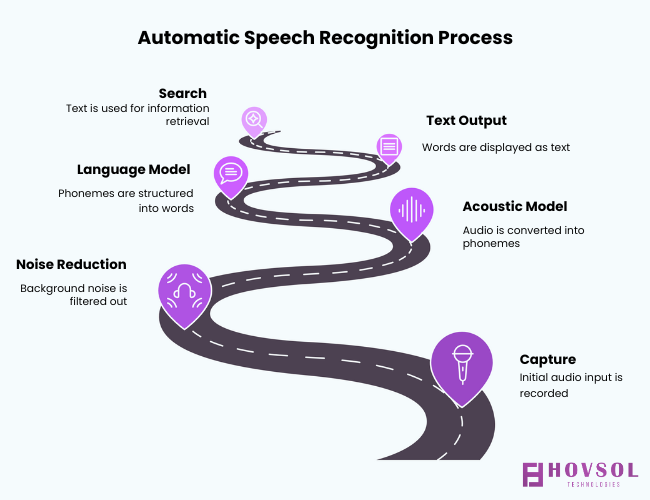
In practice, it means plain language, tidy structure, and pages that make it easy for search engines to lift a direct reply or featured snippets answer. Think of it as modern SEO shaped around how people actually speak.
Why Voice Search Optimization Matters for Your Business
A large share of adults already use voice search, and there are billions of enabled devices in use [verify]. Skip it, and those queries go to someone else.
The benefits go beyond rankings. Voice‑ready content helps search engines understand intent, improves your local SEO presence, and makes life easier for people who use assistive tech. The result is wider reach, smoother journeys, and clearer impact on the business.
How Voice Search Technology Works
Voice assistants use Automatic Speech Recognition (ASR). They record what you say, clean the audio, map the sounds to text, and pass that text to the search engine. If you’ve ever wondered which statement about voice search technology is true, this is the core truth: speech is converted to text, then processed like any other query.
Your job is to make selection simple: keep pages fast, uncluttered, and written to answer a specific question quickly. Those are the replies assistants like to read aloud.
Voice Search vs. Traditional Text Search
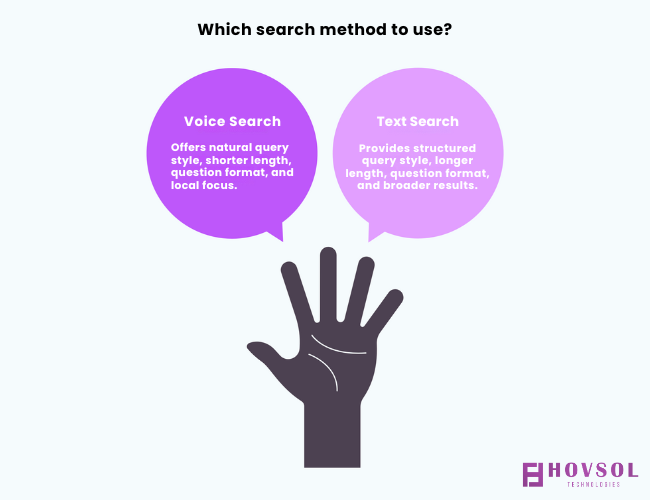
Spoken queries behave differently from typed ones. Knowing the differences helps you optimise with intent.
| Feature | Voice Search | Traditional Text Search |
|---|---|---|
| Query Style | Conversational, natural phrasing | Short, keyword-heavy phrases |
| Length of Queries | Longer, often 5–7 words | Concise, usually 2–3 words |
| Format of Questions | Full questions (“Where’s the closest…?”) | Rarely full questions |
| Common Device Use | Phones, smart speakers, smart TVs | Desktops, laptops |
| Local Focus | Heavy on “near me” searches | Less explicit about location |
| Search Results Emphasis | Direct answers, snippets, map packs | Blue links, rich results, AI overviews |
| Speed Expectation | Instant, spoken response | Fast, but users expect to skim options |
Essential Strategies for Voice Search Optimization (Voice SEO)
Winning voice search is equal parts content craft and technical care. Start with these levers.
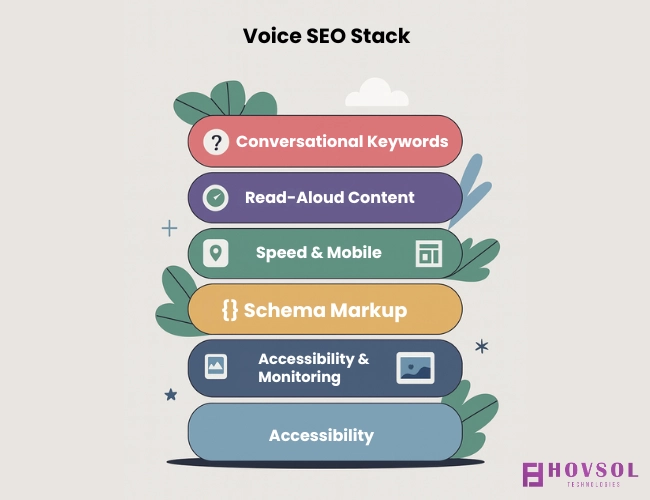
Speak Your Audience’s Language: Keyword Research
People don’t say “Italian restaurant NYC.” They ask, “What’s the best Italian restaurant near me?” Long‑tail keywords for voice search and conversational phrases drive voice queries.
Use AnswerThePublic or Ubersuggest to surface real questions. Check support emails and chat logs for the wording customers use. Younger users fire short commands; older users ask full questions. Cover both.
Voice search optimization examples:
- “ok Google, plumber open now in Austin” (local + urgency)
- “alexa, compare noise‑cancelling headphones under $200” (commercial investigation)
- “how do I set up google voice search on PC?” (help intent)
Craft Engaging Content for Voice Search
Write the way you’d explain it to a colleague. Short sentences. No jargon. One clear question per section, answered upfront.
Use question‑style subheads (e.g., “How do I…?”) and add an FAQ. These patterns increase your chance of earning the featured snippets and voice search answers assistants quote.
Further reading: For a practical content and readability checklist, see Yoast’s guide.
Boost Your Site’s Speed and Mobile‑Friendliness
Most voice searches start on phones. If your layout jumps around or images drag, people bounce.
Run PageSpeed Insights and Lighthouse. Compress images, defer non‑critical scripts, lazy‑load media, and use a CDN. Serve over a mobile‑friendly website with HTTPS—it’s a ranking signal and a trust cue.
Optimize for Local Voice Search
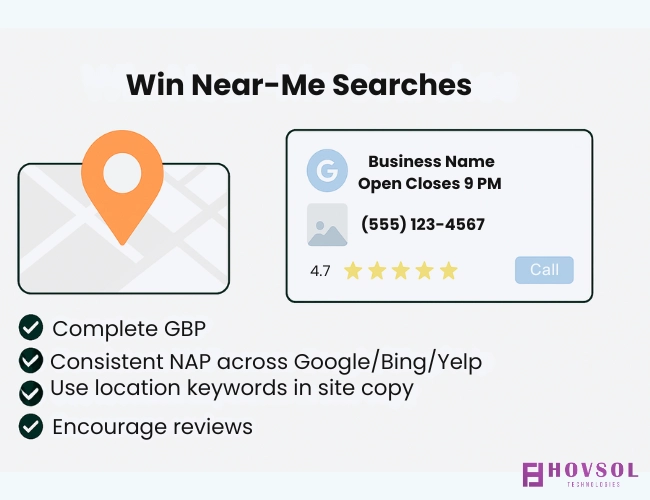
“Near me” rules voice. If you operate in a location or service area, lock down the basics:
- Claim and complete your Google Business Profile (address, hours, phone, services). Keep holiday hours current.
- Add location terms to key pages (“plumber in Austin” beats a generic “plumber”).
- Keep NAP data consistent across Google, Bing Places, Yelp, and industry directories.
Ask happy customers for reviews—snippets often show up in voice answers. This is classic voice search local SEO.
Use Structured Data (Schema Markup)
Schema gives crawlers a clear map. Mark up details like opening hours, ratings, products, events, and FAQs. This supports voice and visual search optimization by clarifying entities to the engine.
Local businesses should consider LocalBusiness or Restaurant. Prefer tools like Yoast SEO or Schema Pro if you don’t want to hand‑code.
Make Your Website Accessible for Everyone
Accessibility and voice work in the same direction. Good structure helps screen readers and improves comprehension for everyone.
Quick checks:
- Add descriptive alt text to images.
- Provide captions or transcripts for video and audio.
- Maintain strong colour contrast and keyboard‑friendly navigation.
Better accessibility reduces friction—and often lifts conversion.
Monitor Your Performance Consistently
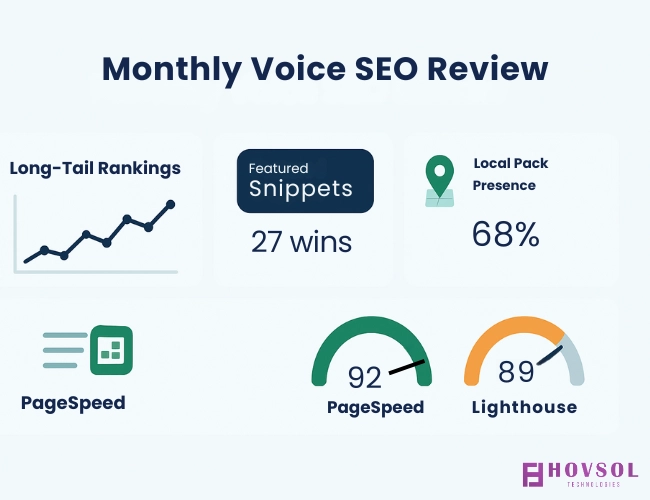
Voice SEO isn’t a one‑off task. Track long‑tail rankings, featured snippets, and local pack visibility.
Use SEMrush Position Tracking, Google Search Console, or Ubersuggest alerts. Review monthly and adjust content or fixes as SERPs evolve with features like AI Overviews. Treat this as ongoing SEO readiness.Related reading: See how Voice SEO fits alongside classic SEO, AEO (Answer Engine Optimization), and GEO (Generative Engine Optimization) in our explainer → SEO vs AEO vs GEO.
FAQs
What is Voice Search Optimization (Voice Search SEO)?
It’s the work of making your site show up for spoken queries. Focus on conversational keywords, direct answers, and strong technical basics—speed, mobile UX, and security. If you need help, a voice SEO company or voice SEO agency can provide voice search optimization services across research, content, schema, and local listings.
How does voice search affect SEO strategies?
Voice leans into questions and longer phrases. It raises the value of featured snippets, schema, and local intent. In practice, you end up writing more helpful, human‑centred content.
Why is local SEO so important for voice search
Most voice queries are location‑driven. Assistants pull from Google Business Profiles and trusted directories. If your information is thin or inconsistent, you won’t appear when people ask “near me.”
What are long‑tail keywords in the context of voice search?
They’re longer, specific phrases that sound like normal speech. Example: instead of “coffee shop,” someone asks, “Where’s the best organic coffee shop near me?”
Which statement about voice search technology is true?
Voice platforms use ASR to turn speech into text, then run a standard search. Clear, concise content and good performance make it more likely your page becomes the spoken answer.
Can I use Google voice search on PC to test?
Yes. Use Chrome with a working microphone, open Google, tap the mic, and try sample queries. Compare results with mobile to see differences in snippets and map packs.
Ready to Speak Your Way to Business Success?
Voice Search Optimization isn’t optional anymore. It’s a practical way to grow organic traffic, reach local customers, and make your site easier for everyone to use.
The same habits—semantic SEO, clean technical setup, and reliable local listings—lift the rest of your marketing too. Start small, review monthly, and keep pace as voice becomes standard. If you’re comparing a voice SEO agency or voice search optimization services, ask for real voice search optimization examples and how they measure snippet wins.




